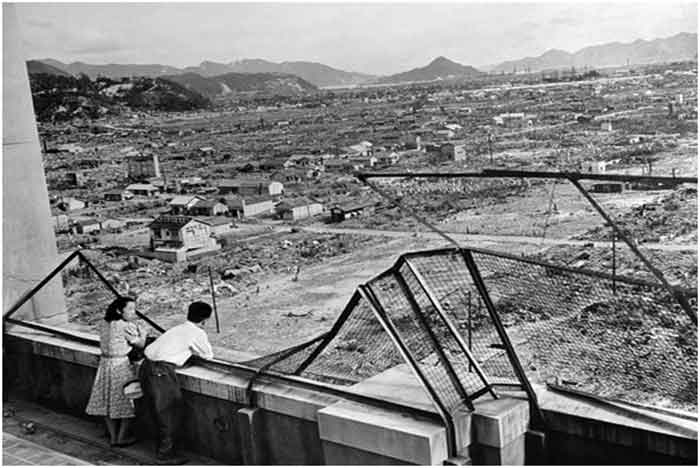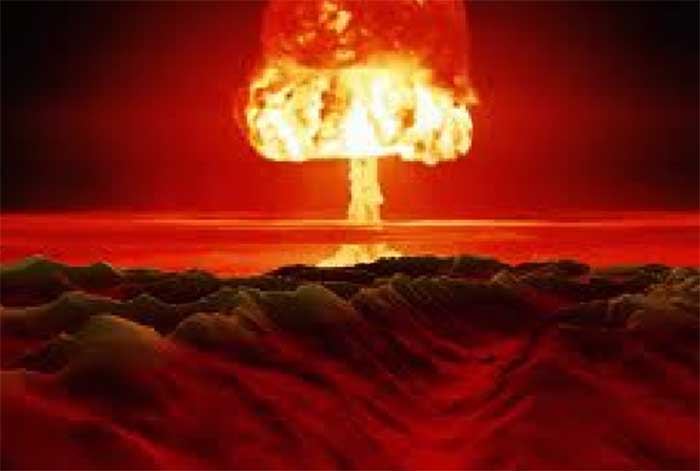
On the 77th anniversary of the bombing of Nagasaki during WWII was cause for a small group of anti-war activists to demonstrate at the White House to draw attention to both that disaster and the ongoing legacy of nuclear war that continues to threaten the world. The setting was appropriate as nearby on the sidewalk in a tent at Lafayette Square a peace vigil against nuclear war has been ongoing for the past 41 years. Originally started by William Thomas, a peace activist, the tent is manned 24 hours a day by anti-war activists in protesting against nuclear war.
Meanwhile across the street on the pavement a single bouquet acted as a reminder in calling for us to repent for the lives lost in the bombing 77years ago of Nagasaki. Activists also displayed graphic photographs of those who had been killed and injured by the nuclear explosion to show the human suffering and lingering effects many endured. Among the photos as a reminder were signs declaring nuclear war as both immoral and illegal according to international agreements.
The threat of nuclear war in today’s world is now even greater among the many nations now possessing such weapons and the state of mind of those despots in whose hands they lie as they continue to threaten the world with a nuclear holocaust if they don’t get their way in resolving various disputes and issues. We live in very dangerous times. Even more so since today’s modern nuclear weapons are many times more powerful than those used on Japan during WWII.
The death toll in Nagasaki was estimated to be 40,000 with another 60,000 injured during the initial explosion. Five months later, the effect of both radiation exposure along with those who died of their injuries from the initial blast brought an evolving final death total up to an estimated 140,000. And for many years and decades afterward people continued to die from exposure to the bomb’s radiation and injuries they had suffered.
The 21-kiloton bomb code named “Fat Man” that was dropped on the city was 40% more powerful than that dropped on Hiroshima only three days earlier. The Nagasaki blast destroyed an area of 43 square miles with almost everything in its center being completely leveled.
While the Nagasaki bomb was more powerful and destructive than that of the Hiroshima bomb, it is that city that is most often associated with nuclear war. Oddly too, as fate would have it, Nagasaki was not the initial target for the bomb that day. Poor weather conditions aborted dropping the bomb on the initial target and the city was chosen at the last minute on the return flight back to base when the bombardier saw a break in the clouds of the city below.
(This article has previously appeared in Nuzeink.)
Phil Pasquini is a freelance journalist and photographer. His reports and photographs appear in the Washington Report on Middle East Affairs, Pakistan Link and Nuze.ink. He is the author of Domes, Arches and Minarets: A History of Islamic-Inspired Buildings in America.
















































